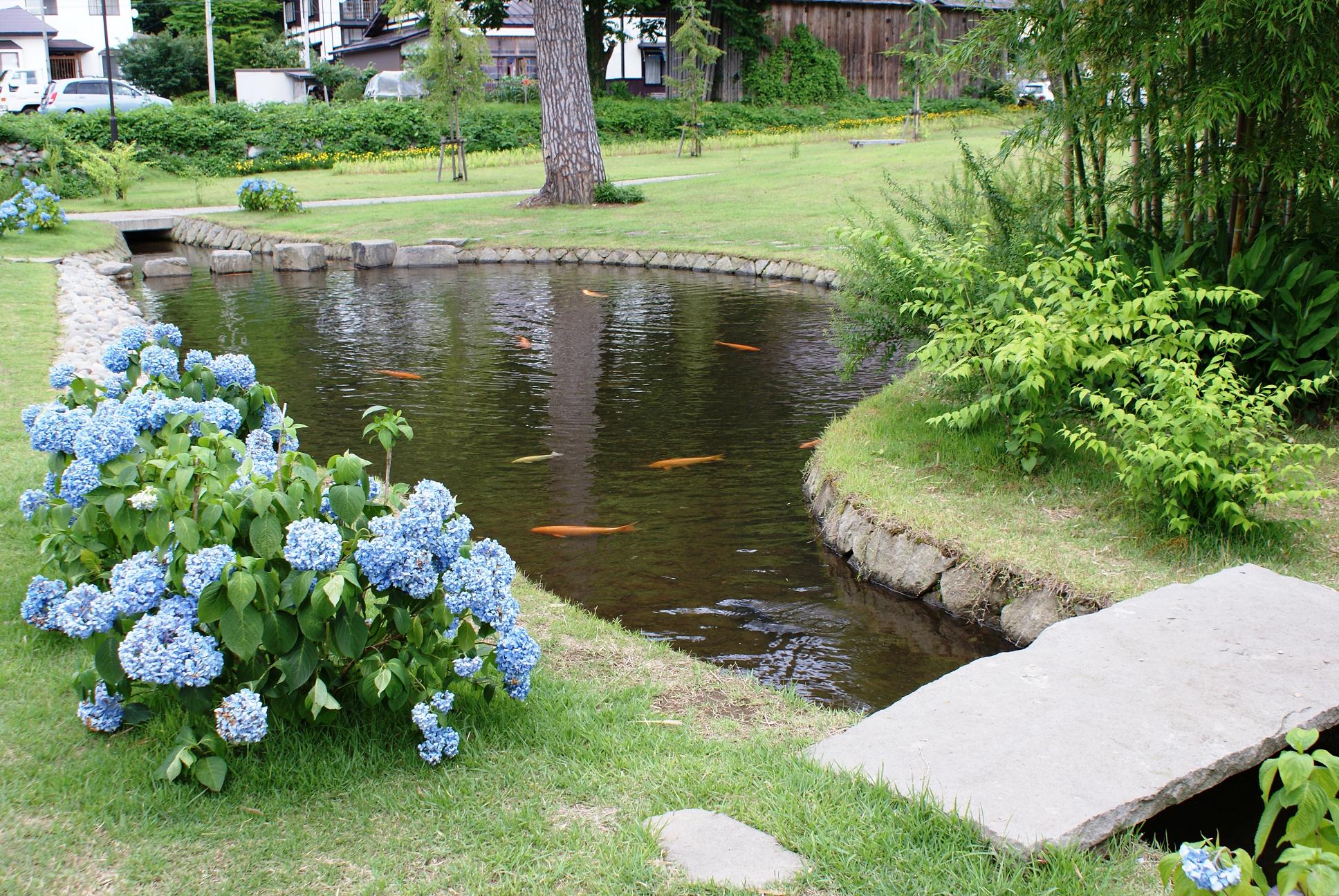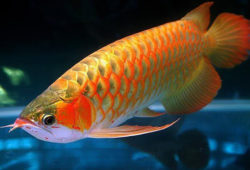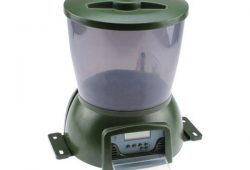When one pond isn’t enough
The article is called – When one pond isn’t enough. Most people are happy with just a single pond in their garden – if they decide later that it’s too small and extending it is out of the question, they might build a second pond if there’s room. But the majority stick with just the one.

However, in Peter and Rachel Beesley’s case, they prefer to keep the ponds they have and build new ones. “We like something to do around the garden,” Peter explained.
“We also love water and as a result, we now have six ponds, all built by ourselves over the years.
“I’ve had ponds for 40-odd years now, and two of those we built here have been in for around 20 years, so they’ve stood the test of time well.”
The ponds range in size from small pre-moulded pools to a 2000-gal. Koi pond. The two smallest are made from pre-moulded rubber liners and have been cleverly located side-by-side so that they look like one larger pond.
“I put these in for my son, so he had a couple of ponds of his own,” Peter explained. “They’ve never had fish in them, but they’ve been great for wildlife over the years.”
There are also two glassfibre ponds of 800 and 400 gal., the larger one has a little waterfall. These were the first two ponds Peter and Rachel added and they did have fish in originally – before they were cleared out by a heron. Now the pond is home to newts and frogs, and when we visited, there were masses of tadpoles.
“The other year we had a heron come and help himself to the tadpoles,” Peter told us. “Only this time he had a friend with him – a crow. We used to regularly sit and watch the two of them walk side by side down to the pond where they’d feast on tadpoles. The population recovered well – shame about the fish, though. But we did see a couple of small goldfish last year, so maybe there are a couple still hiding among the weed.”
Koi story
Despite the regular appearance of Mr Heron and Co. in the smaller ponds, the large Koi pond remains untouched. This may well have something to do with the fact that it’s a part-raised pond and is very close to the house.
It also has a pergola, which can make it harder for these big birds to take off and land right up close to the pond. Just be on the safe side, however, Peter and Rachel put a line up around the pond during the spring and summer months as a further deterrent.
The Koi pond is made using a butyl liner which is fed under one of the courses of bricks. The foundations were dug out by Rachel after she was dared to do it by the family. It has a Hozelock-Cyprio filter (although Peter would like a bigger model as it needs weekly maintenance now that the fish have grown) and an OASE UVC. It’s topped up regularly using water from a water butt.
This pond is six years old and took 18 months to build. Rachel explained that if you look from one end it’s not quite level, but you can’t really notice it from the front. She was at pains to point out that this was nothing to do with her foundations! Peter blamed it on a faulty spirit level…
The pergola was an interesting project. Once again Peter and Rachel built it themselves. “We did try shading the pond with garden parasols to begin with,” Rachel admitted. “They were balanced on the pond walls in an attempt to keep the sun off and weren’t very effective. So we decided on a pergola. Lifting the panels onto the roof was pretty tricky – it’s a long way up to the top of the pergola, let alone when you’re trying to manoeuvre anything that big.”
The pond contains mainly Koi along with a few goldfish. “Gobby”, as Rachel calls him, is a large Ogon who is usually first up to the food and swims backwards while eating. The name suits him, strangely enough. He’s one of the bigger fish, and he’s full of personality.
“When we first started to stock the pond, we just had a few goldfish,” Peter told us. “Then we decided to buy two quite expensive Koi.
Unfortunately, both jumped out and we lost them, so after that we stopped buying the dear stuff. We also bought some Koi from a show we visited, but they infected the rest of our fish with something nasty and we lost about half our stock.”
“We did consider turning the pond into a rockery at that stage,” Rachel added. “It was awful to see so many fish dying. Now we only go to one dealer, Fenland Fisheries in Earith. The fish there are great and the people really know their stuff.”
Japanese garden
The latest project is a Japanese-style area at the bottom of the garden. The path was being laid when we visited. The large butyl-lined pond is 60cm/24″ deep at its maximum point and is already planted and well-matured with an adjoining bog garden.
The same liner has been used for both pond and bog garden, but it was interrupted part-way by putting a bank in and adding more soil so that the boggy area sits just below water level. As this pond is so far down the bottom of the garden, there won’t be any fish in it as they will be unlikely to last long with the heron problem.
Peter and Rachel have done an excellent job here – they have trimmed a large hazel to give it more of a weeping effect, and put lanterns in the trees. Large rocks have been placed to excellent effect to one side of the garden – but Peter let us into a little secret here: they’re all fake.
“We made them ourselves,” he explained. “Two were made by digging a big hole, lining it with polythene and then skinning it with cement. The idea was to let them set and then lift them out. But we couldn’t shift them once they had set. We tried using a crowbar and everything and ended up having to excavate around them. We cracked the big one in three places, so had to stick it all together again.
We vowed not to try it with the third rock. That was moulded in concrete around the box of an old lawnmower.” The rocks work very well, particularly now they have weathered a bit and have mosses growing on them.
When it comes to building work in this area of the garden, Rachel (as always) is all too happy to muck in.
“The garden slopes quite badly in the area where the Japanese garden is situated,” she told us. “We’ve remedied this by building terraces and steps using railway sleepers. They were really heavy.
Peter bought me a chainsaw for my birthday! We cut them into two and put them on a blanket, then dragged them up the garden, sliding them on the grass. One or two had to be used whole, and this meant getting a group of people together to help move them. I had muscles like Popeye by the time we’d finished!”
Other features planned for the Japanese garden include a tea-house which Peter and Rachel are converting from an English summer house. They did look at getting a proper Japanese tea-house, but they don’t come cheap at £5000 or so. So they’re planning to paint the background of their £400 summer house cream and pick out bits in blue, and then add some design to the windows to give it a more Japanese feel. A torri gate (a traditional Japanese entrance) will also be added to the garden.
This whole area gives a lovely feeling of seclusion and is very peaceful, despite the fact that Peter and Rachel live just a mile or so from a busy city centre.
“This part of the garden won’t be finished for a while yet, but we’ve got plenty of time – in between the golf and birdwatching,” Peter said. There’s always plenty to do – I did toy with having a natural stream connecting all the ponds together, right down to the bottom of the garden, but I think that’s probably one idea that will be unlikely to come to anything!”



